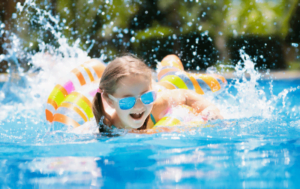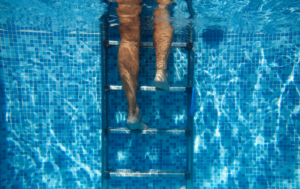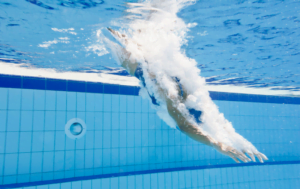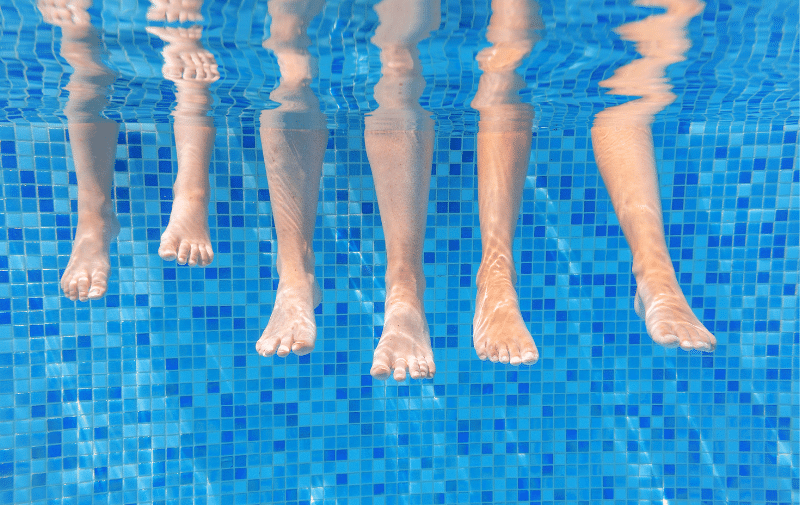Swimming is a fantastic way to cool down and have fun throughout the year. However, if people don’t follow fundamental pool rules and water safety precautions it can quickly become less enjoyable. Swimming pool operators, owners and users must make sure that everyone who uses the swimming pool is safe from harm and understands the rules. Health and safety regulations exist to protect you and others from harm and ensure everyone stays pool safe.
Read some of our top swimming pool safety tips below and discover the best ways to keep safe when swimming.
If you’re considering a new pool for your home, then make sure you’re aware of all the health and safety regulations before you start the process. We offer free quotes for all new pool builds, so give us a call on 01444 236578 to discuss your requirements.
Swimming Pool Safety
1. Familiarise yourself with pool rules
Swimming pool rules are put in place to ensure the safety of all those using the pool. It’s important to be familiar with these specific rules before entering the pool, as they will help to keep you and others safe while swimming.
Ensure children are clear on the rules and the importance of them too. This will ensure they can still have fun playing games in the pool but stay safe at the same time.
2. Children must be supervised at all times

One of the core rules of all pools – children MUST be supervised at ALL times. Children aren’t as strong swimmers as most adults and are unlikely to be able to stand up in the pool. Ensure you’re with them at all times when they’re swimming to ensure optimum safety.
3. Swim to your ability
Be conscious of your swimming ability and swim safely by avoiding going out of your depth. If you are responsible for others in the pool ensure that they stay within the parameters of your ability. If you are unsure of your ability we would recommend taking a swimming lesson to identify strengths and weaknesses.
4. Walk, don’t run
Running on wet and slippery surfaces puts you and others at risk, especially for young children. Ensure you encourage your children and those under your care to walk rather than run.
5. Enter and exit the water in a safe manner

There are typically designated entrance and exit points in all pools, with steps and handrails to help get in and out of the pool easily. Jumping or diving into the swimming pool from the side can easily result in injury, so it’s best to use the proper entrances and exits.
6. Try to avoid swimming within 2 hours of eating
Swimming directly after eating may cause bloating, tiredness and cramps. We would advise avoiding swimming within two hours of eating where possible.
7. Never swim under the influence of alcohol or medication
You should never swim under the influence of alcohol or any medication which may affect your mobility or decision making.
8. Only dive in designated areas

If you would like to jump or dive into the pool please do so from designated areas, such as diving boards. Always make sure to check that the water is clear before diving, and never dive or jump into the shallow end.
9. Pools should be covered.
Children should be supervised at all times when using the swimming pool. If you have a safety cover then it should be on whenever you are not swimming.
When you own your own swimming pool, you’re in charge of the rules and ensuring the health and safety of others in the pool. This includes if you’re renting out your property – you need to make those who are staying there aware of all rules before they stay.
How to keep non-swimmers safe in the water
Ideally non-swimmers should not enter the water without professional supervision, during swimming lessons for example. Non-swimmers should be supervised at all times and make use of flotation devices such as buoyancy aids.

Further health and safety considerations regarding chemicals and measurements
Sanitisers are used in pools, hot tubs/spas, and water playgrounds to prevent the spread of germs and outbreaks. Other pool chemicals assist with the disinfection process (for example, pH control), improve water quality, prevent equipment corrosion and scaling, and protect against algae growth. It’s important to take regular water samples and measurements to ensure that the chemical balance is maintained at an acceptable level.
Guidance for recommended pool chemical levels
Free Chlorine = 1-3 parts per million (ppm)
pH = 7.2-7.6
Total alkalinity = 80-120 parts per million (ppm)
Calcium Hardness = 200-500 ppm
Cyanuric Acid = 40-60 ppm
Phosphates = below 500 ppm
Safety tips for handling swimming pool cleaning chemicals
- Always read the instructions on each product before use, and follow them carefully
- Never mix different chemicals in concentrated forms – this can be very dangerous
- Always pre-dissolve chemicals in a clean, plastic container in a well-ventilated area
- Avoid spillages – if there is a spillage, clean it up using clean receptacles and dispose of them carefully
- Store chemicals in their original packaging, and never use unlabelled chemicals
- Wash hands after handling chemicals
Pool safety help and advice
If you’d like help finding the right chemicals for your pool and how to use them correctly then get in touch. We can also help with any pool safety advice and sell a range of items in our Sheffield Park store that will help keep your swimming pool safe at all times. We also perform regular cleaning and maintenance for swimming pools across Sussex and can help keep your pool safe with efficient, working equipment optimal cleaning and chemicals.
